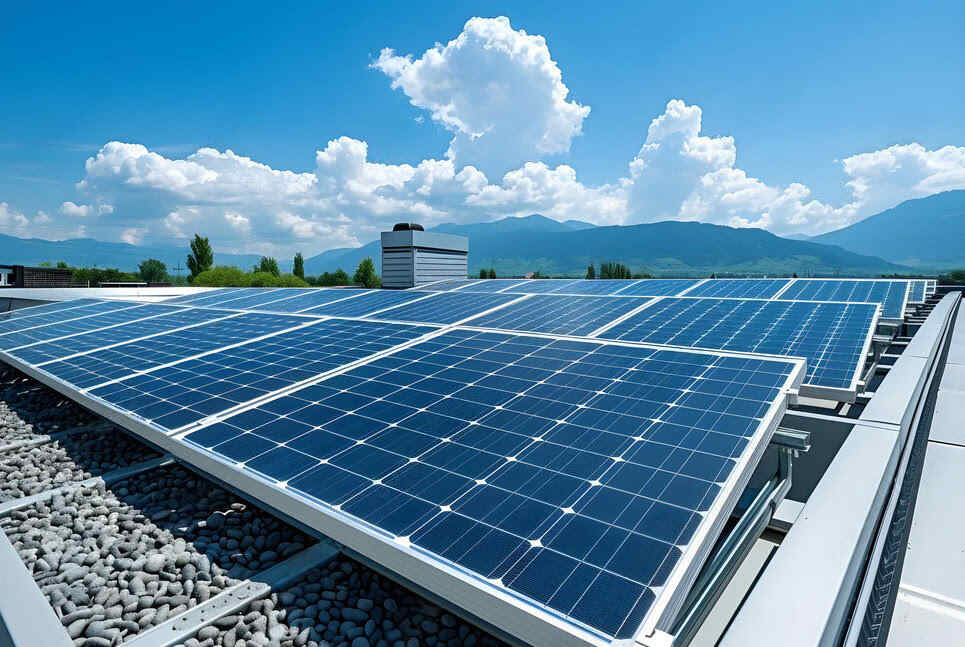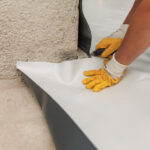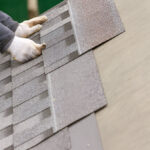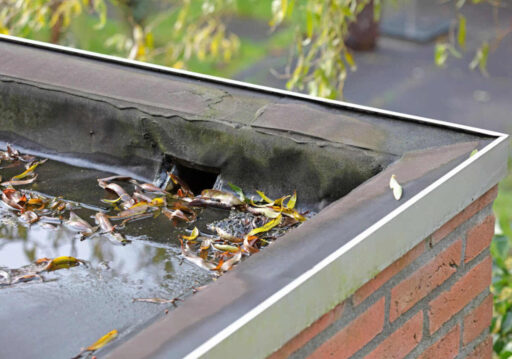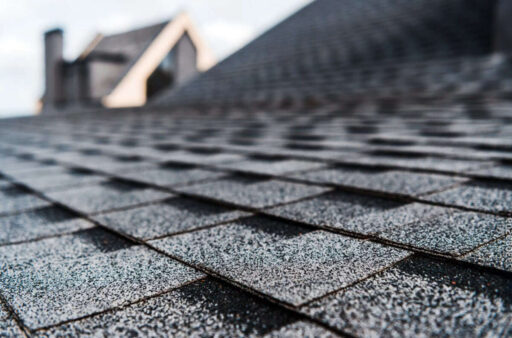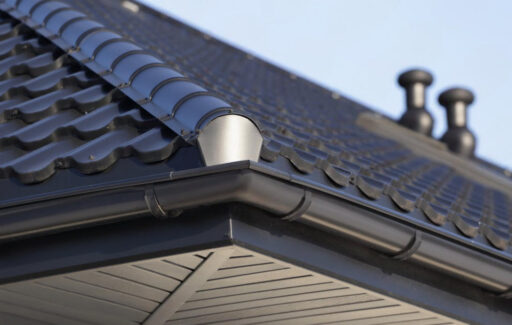Business owners and property managers face a key choice when picking the right commercial roof type. This choice can affect how long their building lasts how much energy it uses, and how much it costs to maintain over time. The roof system has a big job. It guards your commercial property from weather, keeps people inside safe and comfy, and adds to how the building looks overall.
This guide covers different types of commercial roofs, their benefits and drawbacks, and what to think about when choosing one. Whether you’re building from scratch or fixing up an old structure, knowing the good and bad points of each roof option will help you make a smart choice that fits your needs.
Flat Roofs
Flat roofs, which some people call low-slope roofs, are often used on commercial roof types because they’re versatile and don’t cost too much. These roofs usually have a small tilt to help water run off, but they look flat when you see them from the ground.
Pros:
- Affordability: Flat roofs cost less to put up than other roof types, which makes them a good choice for projects with tight budgets.
- Versatility: The level top of these roofs gives plenty of room to set up extra gear, like AC units solar panels, or even gardens.
- Accessibility: Flat roofs are easy to reach for upkeep and fixes, which cuts down on the need for special tools or workers.
Cons:
- Drainage Issues: Good drainage plays a key role in flat roofs to stop water from pooling, which can cause leaks, mould, and hurt the building’s structure over time.
- Limited Insulation: Flat roofs don’t insulate as well as sloped roofs, which might lead to bigger bills for heating and cooling.
- Shorter Lifespan: Flat roofs often don’t last as long as other roof types, and you might need to replace them every 10 to 20 years, based on the materials and how well you take care of them.
Metal Roofs
Metal roofs are tough, save energy, and require little upkeep, which makes them a top pick for commercial buildings.
Pros:
- Longevity: Metal roofs can stand the test of time for many decades often lasting longer than other roofing materials. This makes them a solution for the long haul for your commercial property.
- Energy Efficiency: Metal roofs bounce back a big chunk of the sun’s heat. This cuts down on cooling costs and boosts energy savings.
- Fire Resistance: Metal roofing materials don’t catch fire. They give better protection against fire than other roofing choices.
Cons:
- Installation cost: Installing metal roofs costs more than other commercial roof types, which might impact projects with tight budgets.
- Noise: Metal roofs can make more noise than other roofing materials during heavy rain or hailstorms disturbing occupants.
- Denting and Scratching: Falling objects or maintenance foot traffic can dent and scratch metal roofs affecting their looks over time.
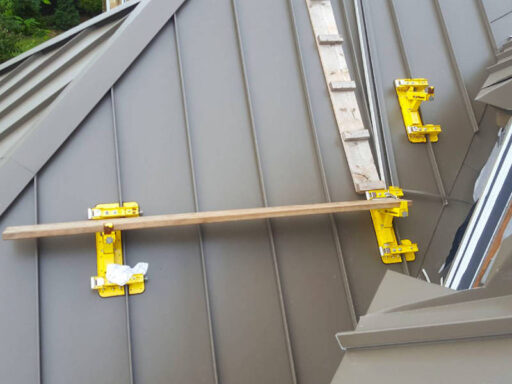
Built-up Roofs
People have used built-up roofing (BUR) systems also called tar and gravel roofs, on commercial buildings for many years. These roofs are popular because they hold up well and resist bad weather.
Pros:
- Longevity: BUR roofs can last 20 to 30 years or longer when installed and maintained offering a durable option for your business property.
- Fire Resistance: BUR roofs have many layers of asphalt and reinforcing materials, which give them great fire resistance and make buildings safer.
- Waterproofing: BUR roofs have multiple layers of waterproofing materials, which protect buildings from leaks and moisture better than other options.
Cons:
- Maintenance Requirements: BUR roofs need ongoing upkeep, including fixing cracks, blisters, or other damage, to make sure they last long and work well.
- Tear-Off Challenges: Replacing BUR roofs involves a tough and expensive tear-off process because workers have to remove many layers.
- Weight Considerations: BUR roofs weigh a lot due to their many layers so some buildings might need extra support to hold them up.
Single-ply Membrane Roofs
Single-ply membrane roofing systems, like thermoplastic polyolefin (TPO) and ethylene propylene diene monomer (EPDM), provide a light and budget-friendly option for commercial structures.
Pros:
- Quick Setup: Workers can set up single-ply membrane roofs without much fuss, which cuts down on labour costs and keeps your business running .
- Adaptability: You can choose from different colours for these roofing systems, and they fit well on roofs of various shapes and designs.
- Tough Against the Elements: These single-ply membranes can stand up to rough weather, including sun damage big temperature changes, and strong winds.
Cons:
- Potential for Punctures: Sharp objects or people walking on single-ply membranes can poke holes in them. This might cause leaks if you don’t fix them.
- Seam Integrity: You need to install and seal the membrane seams to stop water from getting in and causing leaks.
- Limited Lifespan: Single-ply membrane roofs are tough, but they don’t last as long as some other roofing types. With good care, they last between 15 and 25 years.

Green Roofs
Green roofs, which people also call vegetated roofs or eco-roofs, offer a new and earth-friendly way to cover buildings by putting plants on top of a waterproof layer.
Pros:
- Energy Efficiency: Green roofs act as great insulators. They cut down heating and cooling costs and help cool urban areas.
- Stormwater Management: The plants and soil on green roofs soak up and hold onto lots of rain. This cuts down on water runoff and eases the load on city drainage systems.
- Aesthetic Appeal: Green roofs bring a natural, eye-catching look to business buildings. This boosts their overall appearance and might increase how much they’re worth.
Cons:
- Initial Cost: Setting up a green roof system costs more than traditional roofing choices because it needs extra materials and specialized workers.
- Maintenance Needs: Green roofs need regular upkeep, like pulling weeds, watering, and checking for possible problems such as sick plants or bug invasions.
- Structural Issues: The extra weight from soil, plants, and water-holding layers might mean some buildings need stronger support, which makes construction pricier.
Comparison of Commercial Roof Types
To help you choose better, we’ve put together a table showing the good and bad points of the most common commercial roofing choices. This quick comparison gives you a snapshot of what each roof type does well and where it falls short making it easier to pick the right one for your building’s needs and budget.
| Roof Type | Pros | Cons |
| Flat Roofs | – Affordable – Versatile for additional equipment – Easy access for maintenance |
– Drainage issues – Limited insulation – Shorter lifespan |
| Metal Roofs | – Long-lasting – Energy efficient – Fire-resistant |
– High initial cost – Noisy during rain/hail – Susceptible to denting and scratching |
| Asphalt Roofs | – Cost-effective – Flexible in design – Excellent waterproofing |
– Shorter lifespan – Requires regular maintenance – Absorbs heat |
| Single-Ply Membrane | – Easy to install – Flexible – Weather-resistant |
– Prone to punctures – Seam integrity issues – Shorter lifespan |
| Built-Up Roofs (BUR) | – Long-lasting – Fire-resistant – Excellent waterproofing |
– Requires regular maintenance – Tear-off challenges – Heavy weight |
| Green Roofs | – Energy-efficient – Reduces stormwater runoff – Aesthetically pleasing |
– High initial cost – Requires maintenance – May need structural reinforcement |
Things To Think About When Picking a Commercial Roof Type
When deciding on the best commercial roof type for your building, consider several factors. These factors can impact how well the roofing system performs and how long it lasts. Additionally, think about whether it’s a good long-term investment.
- Climate and Weather Conditions: The local climate and weather patterns have an impact on how well different commercial roof types perform and how long they last. This includes how hot or cold it gets how much rain or snow falls, and how windy it is.
- Building Structure and Design: How steep the roof is, what shape it has, and how the whole building is designed all matter when choosing the right roofing system. The building’s overall strength is also key.
- Energy Efficiency and Sustainability Goals: If you want to save energy and be kind to the environment, some roofing options might suit you better. These include cool roofs green roofs, or roofs ready for solar panels.
- Budget and Long-Term Costs: The upfront cost matters, but you need to think about how much it’ll cost to keep up, fix, and replace different commercial roof types over time.
- Local Building Codes and Regulations: Make sure the roof you pick follows the rules in your area. This includes building codes, fire safety rules, and any zoning or environmental laws that apply.
- Warranty and Manufacturer Support: Look into the guarantees and help that different roof makers offer. Also, check out the reputation and past work of the contractors or installers you’re thinking of hiring.
Summary
Selecting the appropriate commercial roof type is a critical decision. It can significantly impact the longevity, energy efficiency, and overall performance of your building. Carefully evaluate the pros and cons of each roofing option. Consider the specific needs of your commercial property. Factor in long-term maintenance and repair requirements. By doing so, you can make an informed choice that aligns with your business goals and budget. Remember, a well-designed and properly installed commercial roofing system offers multiple benefits. It protects your building and its occupants. It also contributes to energy savings, sustainability, and overall property value.
